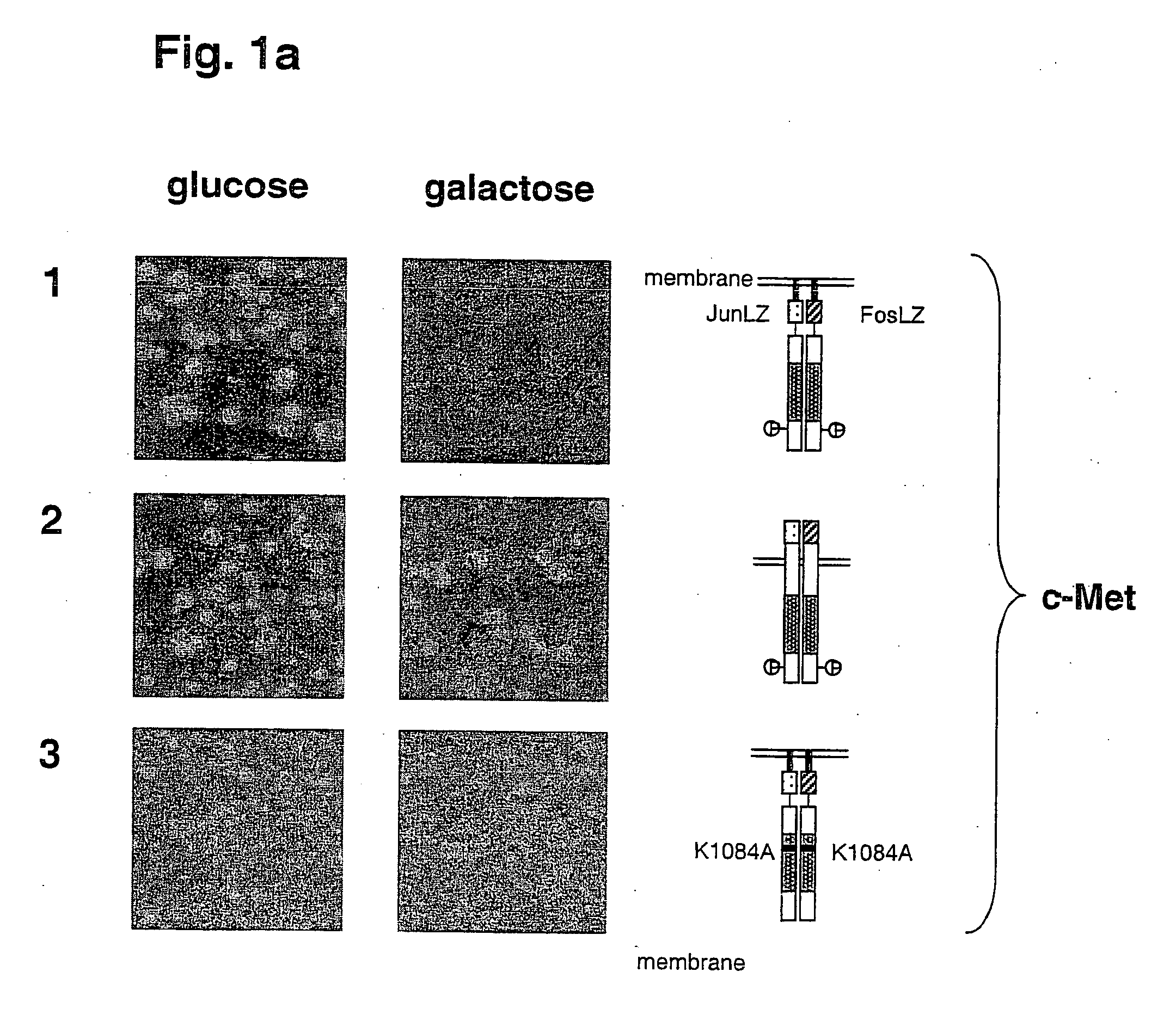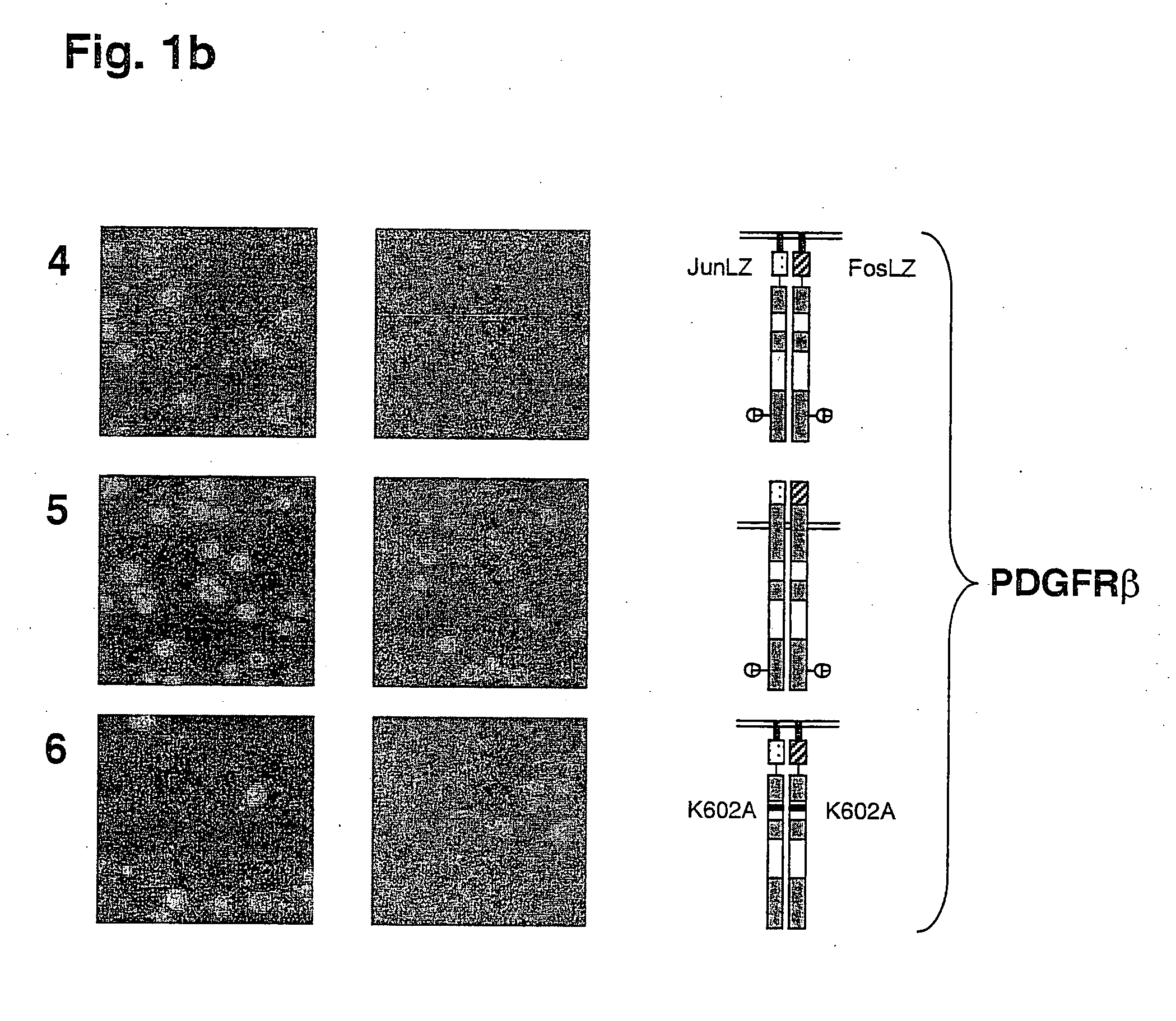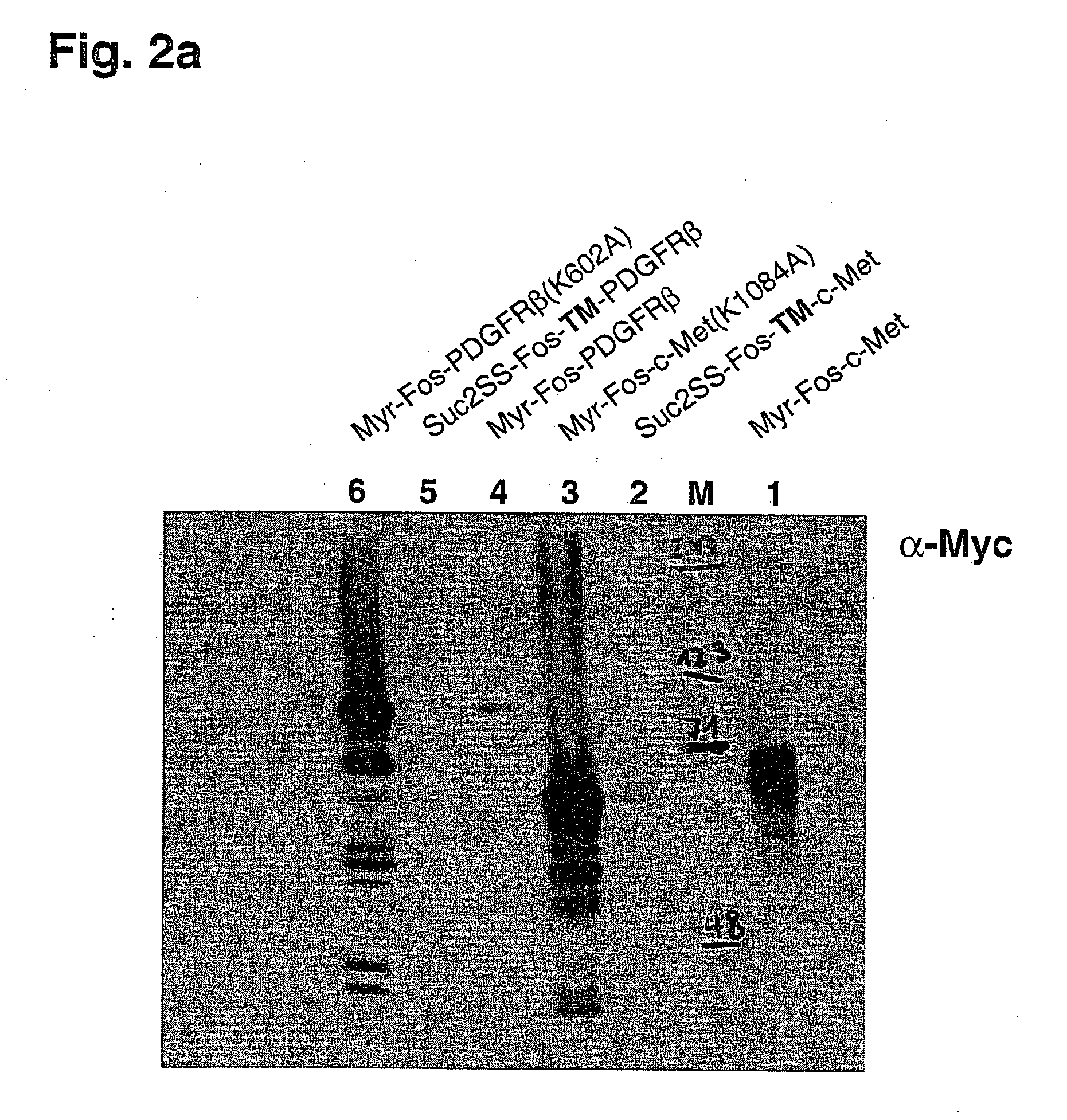Method for the identification and/or validation of receptor tyrosine kinase inhibitors
inhibitor technology, applied in the field of cell-based methods for the identification and/or validation of inhibitors of a receptor tyrosine kinase activity, can solve the problems of malignant transformation, increased the incidence of receptor dimerization, and constitutive activation of the rtk
- Summary
- Abstract
- Description
- Claims
- Application Information
AI Technical Summary
Benefits of technology
Problems solved by technology
Method used
Image
Examples
experiment 1
[0058] The results of this experiment are shown in FIG. 1 and FIGS. 2a and 2b.
[0059] Cell growth and colony formation on glucose plates, on which expression of the RTK genes is repressed, is shown in the left row. Cell growth and colony formation on galactose plates, on which RTK gene expression is induced, is shown in the right lane. Expression of active cytoplasmic domains of the RTKs c-Met and PDGFRβ causes kinase-dependent growth inhibition of yeast cells (FIGS. 1a and 1b, lanes 1 and 4). Inactivation of the kinase activity through mutation of a conserved lysine residue (Lys=K) in the ATP-binding pockets of these RTKs suppresses the growth inhibitory effect (FIGS. 1a and 1b, lanes 3 and 6). In contrast to the isolated cytoplasmic domains of these RTKs, inclusion of the respective transmembrane domains of these proteins, in addition to a signal peptide for ER localization and secretion, caused the abolition of the inhibitory effect on cell growth (FIGS. 1a and 1b, lanes 2 and 5)...
experiment 2
[0062] The results of this experiment are shown in FIG. 3.
[0063] Selection of specific inhibition of Receptor Tyrosine Kinase activity in yeast. Expression of the human receptor tyrosine kinases PDGFR-β and RET in yeast causes strong retardation of cell growth, as determined by OD 600 nm light scattering measurement of both cell cultures. Addition of the kinase inhibitor imatinib mesylate (Gleevec®, Novartis), which is known to inhibit PDGFR-β but not RET, at a concentration of 50 μM in the yeast culture specifically restores growth of PDGFR-β-expressing yeast cells but not growth of cells expressing RET.
[0064] While there are shown and described presently preferred embodiments of the invention, it is to be distinctly understood that the invention is not limited thereto but may be otherwise variously embodied and practiced within the scope of the following claims.
PUM
 Login to View More
Login to View More Abstract
Description
Claims
Application Information
 Login to View More
Login to View More - R&D
- Intellectual Property
- Life Sciences
- Materials
- Tech Scout
- Unparalleled Data Quality
- Higher Quality Content
- 60% Fewer Hallucinations
Browse by: Latest US Patents, China's latest patents, Technical Efficacy Thesaurus, Application Domain, Technology Topic, Popular Technical Reports.
© 2025 PatSnap. All rights reserved.Legal|Privacy policy|Modern Slavery Act Transparency Statement|Sitemap|About US| Contact US: help@patsnap.com



